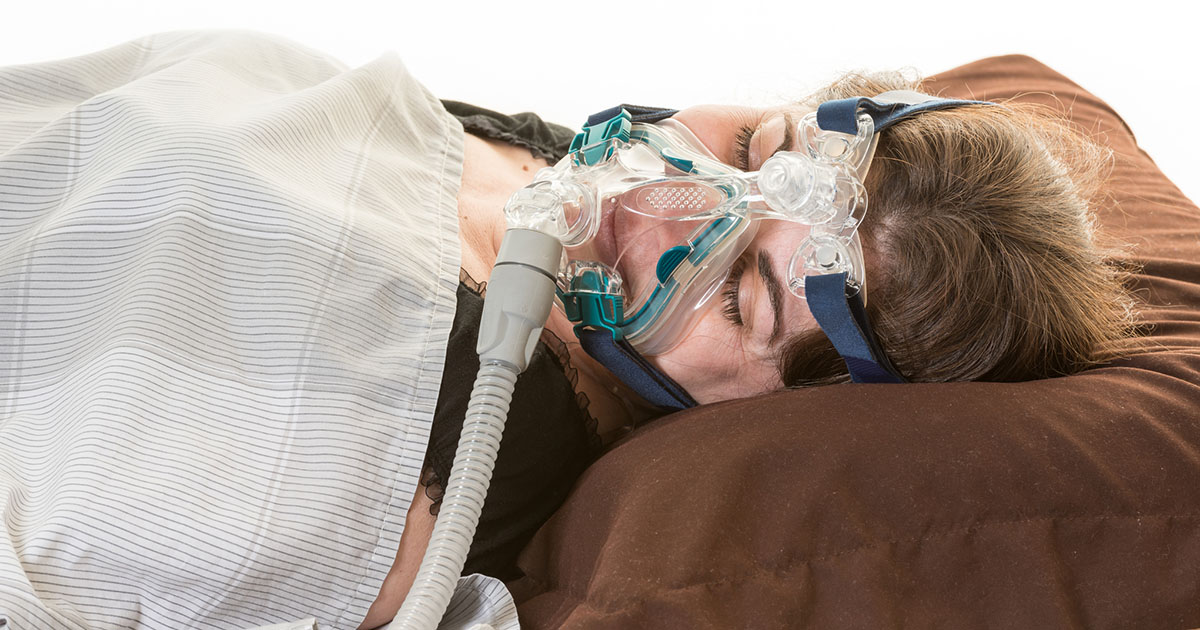Everything Patients Need To Know About Goldenhar Syndrome
When it comes to congenital health conditions, most individuals have never heard of Goldenhar syndrome, sometimes referred to as oculo-auriculo-vertebral spectrum, before. This is no surprise, as reports indicate it is quite the rare condition and only occurs once in every 3,500 births or even just once in every 26,000 births. This condition is named after Maurice Goldenhar, an ophthalmologist and general practitioner, who discovered it in 1952. Although Goldenhar syndrome is a rare congenital condition, given the lack of knowledge about this condition, it is critical for patients to obtain as much information as possible to be better prepared to deal with it. With this in mind, here is everything patients need to understand about Goldenhar syndrome, from the causes to the outlook for those living with the disease.
Underlying Causes

When it comes to any health condition, both permanent and temporary, one piece of information just about everyone wants to know is what causes the issue in the first place. Most would agree this plays a significant role in determining how to cure the condition. Unfortunately, research has not revealed a definite cause of Goldenhar syndrome and most cases of this condition appear at random with no clear explanation. Some experts have suspicions that blood flow or similar interruptions during fetal development play a significant role in Goldenhar syndrome, but it is still unclear. Furthermore, there is no definitive answer as to how big of a role genetics play, since research shows just one to two percent of patients have other family members with Goldenhar syndrome.
Continue reading to reveal what the symptoms of Goldenhar syndrome are.
Identifying The Symptoms

Though they are easier to identify than the cause, symptoms of Goldenhar syndrome do vary between patients. Typically, this condition only affects one side of the patient’s face, but ten to thirty-three percent of patients have both sides involved.
The most common symptoms of Goldenhar syndrome include ear abnormalities such as microtia, which is a partially formed or missing ear, a cleft lip, cleft palate or even both, underdeveloped facial muscles, and an underdeveloped jaw, cheek, or temple bones. Other indicators of this disease are eye abnormalities, dental abnormalities, such as an unusually small or large mouth, vision loss, and hearing loss. Potential eye abnormalities include anophthalmia, the absence of one or both eyes, and microphthalmia, where one or both eyes are abnormally small. Patients with Goldenhar syndrome may also experience heart, lung, and kidney problems, as well as limb malformations, spinal abnormalities, and hydrocephalus, though these are less common.
Continue reading to learn about how doctors reach a diagnosis of Goldenhar syndrome.
Diagnosing Goldenhar Syndrome

Doctors diagnose Goldenhar syndrome by identifying the characteristic symptoms previously mentioned. They go about doing this by conducting a physical examination as well as specialized testing. Specialized tests for this condition include obtaining x-rays of bones, magnetic resonance imaging (MRI) to obtain detailed images of organs and other body structures, and a computed tomography (CT) scan, which combines computer technology and x-rays to produce cross-sectional images of the body. Doctors may also require genetic testing to rule out any potential conditions with similar markers. Additionally, many doctors use an ultrasound, typically used to track fetal development, to detect organ abnormalities, particularly on the heart and kidneys. Finally, should the patient exhibit signs of hearing or vision loss, doctors will also use hearing and vision tests to assess the extent of the issue.
Beyond providing a detailed diagnosis of Goldenhar syndrome, the results of these medical tests are key for doctors to develop an individualized plan for treating and managing the patient’s condition. Speaking of treatment, continue reading to see what it entails for Goldenhar syndrome.
Treatment And Management Options

Patients will receive individualized treatment for their condition based on the symptoms they exhibit, as well as the severity. Treatment will also vary based on the age of the patient and what they require during their growth. What is common, however, is to have a team of specialists managing each patient’s care.
The common issues doctors address when treating a patient’s Goldenhar syndrome include feeding and breathing issues. Feeding issues often require gastrostomy tube placement, supplemental nasogastric feedings, and even special bottles that are often meant for babies. Breathing issues include sleep apnea, which may require a breathing machine during sleep. Other common problems treated include hearing loss requiring the use of hearing aids, speech issues treated with speech therapy and evaluation, as well as surgeries to correct cleft lip and cleft palate, epibulbar tumors, and other symptoms requiring surgical intervention.
Goldenhar syndrome, though a rare disease, is clearly a tough one to deal with. Continue reading for a brief look into the outlook for patients with this congenital condition.
Outlook For Patients

Although Goldenhar syndrome does affect multiple body systems, the outlook for the vast majority of patients is good, and they can live a normal lifespan. This includes enjoying many of the typical pursuits those without health issues do, such as having children and enjoying their work. However, to obtain the optimal outcome, continued treatment and monitoring are required for patients with Goldenhar syndrome. This treatment will vary not only from patient to patientbut also based on the condition’s progression in each individual. That being said, the typical medical professionals involved in continued treatment include orthopedists (bone and muscle), pulmonologist (breathing), cardiologist (heart), urologist (kidney and bladder), audiologist (hearing), speech therapist, as well as physical and occupational therapists.
With this knowledge dealing with Goldenhar syndrome is completely manageable. Just remember, persistence is key!
Get familiar with the complications of Goldenhar syndrome next.
Complications Of Goldenhar Syndrome

Goldenhar syndrome has been associated with several potential complications that arise from the structural or functional abnormalities that develop in patients. Between five and fifty-eight percent of affected individuals develop congenital heart defects or cardiac anomalies that may need to be corrected through surgical procedures. Between five and fifteen percent of Goldenhar syndrome patients will experience reduced visual acuity and other visual manifestations. Individuals affected by Goldenhar syndrome may develop many other complications, such as delayed dental development, conductive hearing loss, disorders associated with an abnormal vertebral arrangement and vertebrae formation, benign tumor formation over the sclera or cornea, intellectual disabilities, learning disorders, and issues with breathing, eating, and swallowing. Complications of Goldenhar syndrome are not limited to those listed and can vary depending on which part of a patient's face, head, or neck is affected.
Learn about the prevalence of Goldenhar syndrome next.
Prevalence Of Goldenhar Syndrome

According to the National Center for Advancing Sciences or NIH, Goldenhar syndrome is considered a rare disease. No official method has been developed or put into place to calculate an incidence or prevalence of certain rare diseases at this time. With the scarce information available regarding the prevalence of Goldenhar syndrome, it is estimated that the prevalence remains between one case for every 3,500 births and one case for every 25,000 births on a worldwide scale. It is estimated that between 300,000 and 1,300,000 individuals are affected by Goldenhar syndrome throughout the world. It is estimated that between 13,000 and 56,000 individuals are affected by Goldenhar syndrome in the United States. It is estimated that two males are diagnosed with Goldenhar syndrome for each female diagnosed with the disorder. Less information is available to evaluate the proportion of cases that affect the face unilaterally to the cases that affect both sides of the face.
Keep reading to learn about the connection between Goldenhar syndrome and genetics next.
Goldenhar Syndrome And Genetics

The majority of patients diagnosed with Goldenhar syndrome do not have any family history of the disorder. In exceptional cases, Goldenhar syndrome may be inherited from an individual's parents in an autosomal dominant manner. It is estimated that between one and two percent of all diagnosed Goldenhar syndrome cases are attributed to an inherited genetic abnormality. The gene or genes that cause an individual to have Goldenhar syndrome are located on one of their chromosomes not associated with their gender. Sporadic cases of Goldenhar syndrome are caused by a spontaneous abnormality present in one or more of an affected individual's genes. The exact gene(s) that cause an individual to develop this disorder before birth have not yet been identified by researchers due to its classification as a rare disease. Because the genes responsible for Goldenhar syndrome have not been pinpointed in the medical community, there is no official chromosomal or genetic test that can be used to diagnose or identify Goldenhar syndrome.
Read about other conditions in craniofacial microsomia next.
Other Conditions In Craniofacial Microsomia

Craniofacial microsomia is an umbrella term used to characterize a spectrum of skull and face development abnormalities that develop before an individual's birth. Goldenhar syndrome falls into the classification of craniofacial microsomia, as does Goldenhar-Gorlin syndrome, hemifacial microsomia, lateral facial dysplasia, oral-mandibular-auricular syndrome, otomandibular dysostosis, OAV complex, and many others. General characteristics seen in most forms of craniofacial microsomia include mandibular hypoplasia, ear abnormalities, maxillary hypoplasia, unusually small eyeball, malformations in the bones of the spine, irregularly shaped kidneys, and defects in the heart's structure. Craniofacial microsomia is estimated to have a prevalence of between one per 5,600 births and one per 26,550 births worldwide. Most other forms of craniofacial microsomia, like Goldenhar syndrome, have an imbalance in the proportion of affected males to affected females. Most forms of craniofacial microsomia are the result of an inherited or sporadic duplication or deletion of certain genetic components that influence the normal development and growth of facial components and other tissues.
Discover differential diagnoses for Goldenhar syndrome next.
Differential Diagnosis

There are several differential diagnoses for individuals suspected to be affected by Goldenhar syndrome. DiGeorge syndrome or 22q11.2 Deletion syndrome is another rare congenital disease and it presents with heart defects, certain characteristic facial features and deformities, upper cervical spine anomalies, and recurrent infections. Cleidocranial dysplasia is a genetic disorder characterized by hypoplasia, clavicular aplasia, dental anomalies, brachydactyly, and vertebral abnormalities. Hajdu-Cheney syndrome is another rare genetic disorder that produces dysmorphic facial characteristics, vertebral abnormalities, osteoporosis, acroosteolysis, and bowed long bones. CHARGE syndrome is another disorder characterized by choanal atresia, genital hypoplasia, coloboma, restricted growth and development, ear anomalies, and heart anomalies. Robinow syndrome produces dysmorphic facial features, hyperplastic genitalia, vertebral segmentation abnormalities, and short-limbed dwarfism. Jarcho-Levin syndrome causes deformities in the ribs and severe vertebral segmentation. These differential diagnoses must be ruled out to confirm a diagnosis of Goldenhar syndrome.